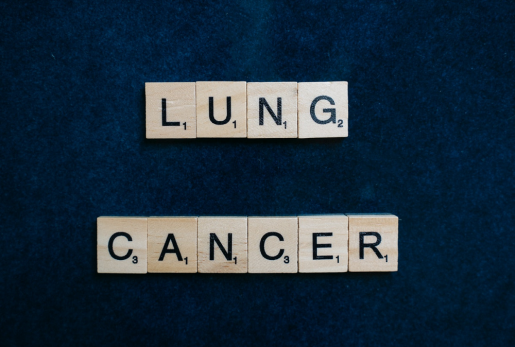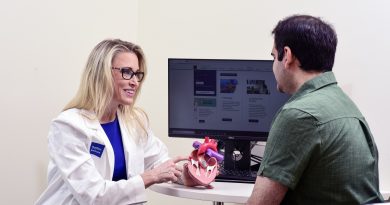Lung cancer awareness: The importance of early detection and treatment
Lung cancer is the third most common cancer in the U.S. and there have been more than 235,000 new cases of lung cancer in 2021. While this figure is significant, the rate of new lung and bronchus cancer cases is decreasing, in part because more people have stopped smoking. This trend, along with innovations in early detection and treatment, is also reducing the number of lung cancer deaths.
Dr. Robert Taylor Ripley, associate professor of surgery in the Division of General Thoracic Surgery, is an expert in mesothelioma and thoracic surgical oncology. In the following Q&A, he discusses common causes of lung cancer, risks and the latest treatments.
Q: What are the most common causes of lung cancer?
A: Smoking cigarettes is the most common cause, but others include secondhand smoke and environmental inhalants. We see a fair number of patients with lung cancer who have never smoked. Exposure to diesel exhaust or other chemicals may also cause lung cancer in some non-smokers.

Q: What are some additional risk factors?
A: When a patient has a lung cancer removed, over time the risk of a recurrence from that tumor goes down. However, the risk of having a new, second lung cancer goes up. That risk can be as high as 20% at 10 years following the first occurrence. After a lesion is removed, patients should have routine CT scans so if a tumor develops, it can be detected and treated early.
Q: Are there typical symptoms for lung cancer?
A: When patients are symptomatic, the lung cancer tends to be relatively advanced. Persistent coughing and shortness of breath will typically prompt an evaluation of the respiratory system and lungs. Those evaluations often consist of a chest X-ray or a CT scan. Patients who have a significant smoking history or risk for lung cancer need to talk to their medical providers about whether CT screening is appropriate.
Q: Can lung cancer show up as pneumonia?
A: If a lung cancer grows where it blocks your airways, air can enter the lungs behind the tumor in which bacteria gets trapped, causing obstructive pneumonia. Lung cancer and pneumonia can coexist in a patient, so if you are diagnosed with pneumonia it’s important to follow up with your doctor after treatment to ensure there isn’t an underlying problem that needs further evaluation.
Q: How is lung cancer treated?
A: For early lung cancer, we usually recommend surgical resection. We can now perform the removal through eight-millimeter incisions using a robot or minimally invasive procedures, allowing for rapid recovery. The alternative for early-stage cancer is stereotactic body radiation therapy, which uses a few doses of radiation to kill cancer cells. Chemotherapy is still effective for many types of lung cancer, but we have a better understanding of the various mutations. This allows for more targeted treatment. Lastly, patients are now treated with immunotherapy using drugs that are called checkpoint inhibitors, which block the brakes on your immune system and allow T cells, which help protect the body from infection, to kill cancer cells.
Q: When is lung cancer inoperable?
A: Lung cancer is inoperable when it’s in advanced stages and has spread outside the chest or to lymph nodes. When foreign material enters the body, the lymph nodes see it and clean it. They also will pick up tumor cells. As some point the tumor is considered inoperable. Another inoperable situation is when lung cancer cells have spread to distant locations such as the brain, bones or liver. In those cases, the focus is on systemic treatments such as chemotherapy or immunotherapy.
Q: When is a lung transplant considered an option?
A: For lung cancer, it’s rare. Lung transplants are primarily considered for end-stage respiratory failure.
Q: What advances in lung cancer care are improving patient outcomes?
A: We’ve made great strides in targeting specific mutations and immunotherapy. The driver mutation in cancer cells is what causes them to keep growing, and there are now two drugs that target these mutations. Also, a drug was reported that targets a mutation in a driver protein that decreases the chance of lung cancer coming back.
We need to screen for lung cancer before a patient has it and after they’ve had it and been cured — similar to the way mammograms are done. Eventually we will see lung cancer among those risk models and, as a society, we will become better at detecting lung cancer at an early stage.
Additional Resources
To schedule an appointment, call 713–798–6376 or request an appointment online.
Learn more about The Lung Institute at Baylor Medicine.
-By Bertie Taylor, senior writer in the Michael E. DeBakey Department of Surgery at Baylor College of Medicine



